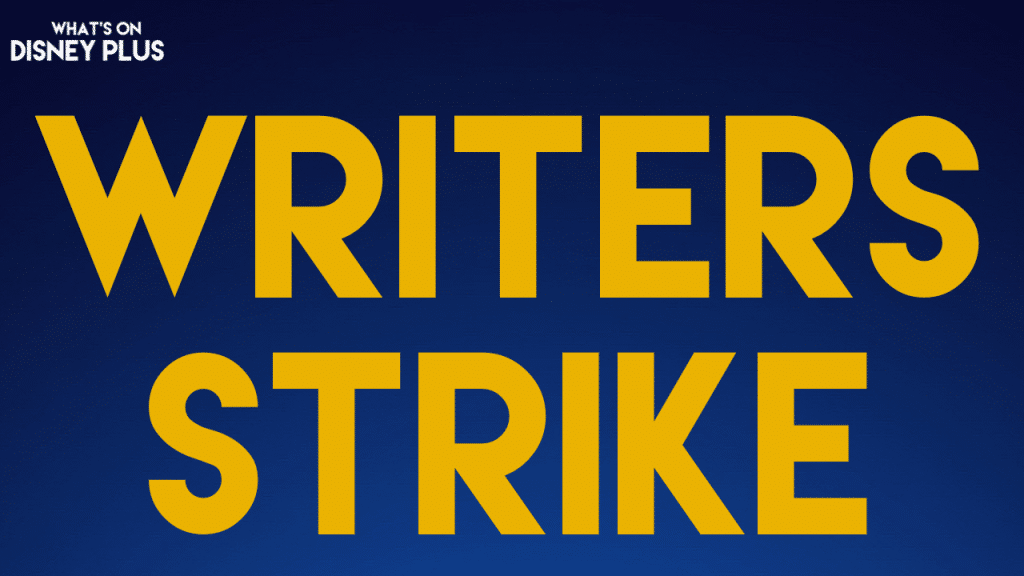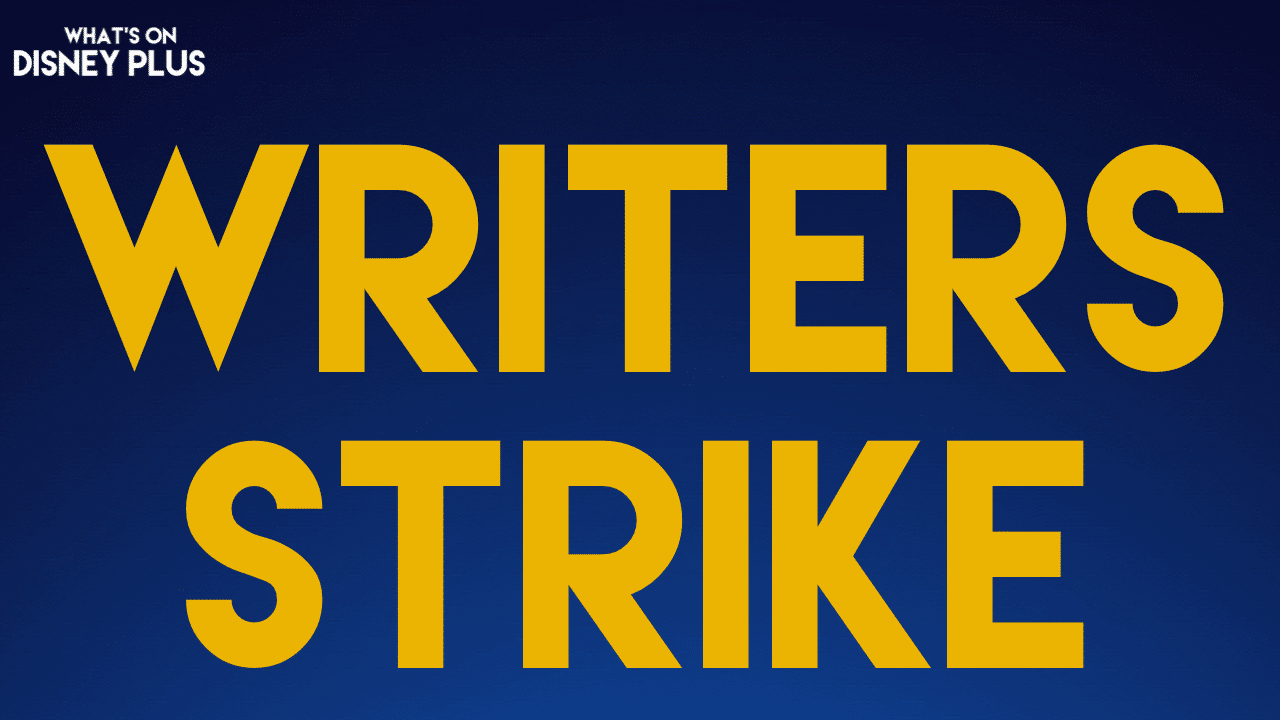
Hollywood Studios Reply To Writer’s Strike
Earlier this week, the Writer’s Guild Of America went on strike following discussions with the Alliance of Motion Picture and Television Producers, which includes the major studios such as Disney, Netflix, Amazon, Apple, Discovery-Warner, NBC Universal, Paramount and Sony.
The strike is happening because the WGA believe that the studios’ responses to their requests have been wholly insufficient given the existential crisis writers are facing. WGA believe that the companies’ behaviour has created a gig economy inside a union workforce, and their immovable stance in this negotiation has betrayed a commitment to further devaluing the profession of writing. From their refusal to guarantee any level of weekly employment in episodic television, to the creation of a “day rate” in comedy variety, to their stonewalling on free work for screenwriters and on AI for all writers, they have closed the door on their labour force and opened the door to writing as an entirely freelance profession. No such deal could ever be contemplated by this membership.
Now, the Alliance of Motion Picture and Television Producers (AMPTP) have released some details about the WGA’s talking points, which resulted in negotiations failing, which ultimately led to the writer’s strike starting.
Here is the full statement from the AMPTP:
Mandatory Staffing and Duration of Employment
The WGA’s set of demands includes proposals regarding mandatory staffing and guarantees of employment. These proposals require studios to staff a show with a certain number of writers who will be hired for a specified period of time that may not align with the creative process. If writing needs to be done, writers are hired, but these proposals require the employment of writers whether they’re needed for the creative process or not. While the WGA has argued that the proposal is necessary to “preserv[e] the writers’ room,” it is in reality a hiring quota that is incompatible with the creative nature of our industry. We don’t agree with applying a one-size-fits-all solution to shows that are unique and different in their approach to creative staffing. Some writers are the sole voice of a show and others work with only a small team. The WGA’s proposals would preclude that.Overall Numbers
The WGA claims that the companies’ most recent offer on minimum wage increases adds up to approximately $41 million per year. Based on information available from the pension and health plans, the companies’ offer on minimum wages is closer to $97 million per year. And that doesn’t take into account the additional outsized wage increases and residual increases that the companies have offered.Wage Increases
The first-year general wage increase currently on the table is the highest first-year increase offered to the WGA in more than 25 years. In addition, the companies have offered to create an entirely new category of rates that will establish a new and higher floor for mid-level writers’ compensation.Streaming Residuals
In the most recent contract (2020), the WGA negotiated a 46% increase in residuals for streaming programs to take effect starting in 2022. In many cases, writers have only recently begun to see these increases in their paychecks. Under the current formula for a one-hour series produced for Netflix or Amazon Prime Video, a writer receives $72,000 in residuals for one episode over three years. Over five years, that amount grows to $99,000, and then to $114,000 over seven years. The companies’ most recent offer further improves on these amounts. The WGA’s proposal on foreign streaming residuals represents a 200% increase over current rates and treats foreign subscribers the same as domestic subscribers. However, subscription fees vary from country to country, and in many countries, the subscription fee is substantially less than it is in the U.S. Nevertheless, the companies have recognized the importance of foreign streaming and have offered to increase the residual. These improvements apply to all types of streaming programs, including all feature-length streaming programs.The “Gig Economy”
The WGA claims that companies are treating television writers’ jobs as if they were part of a “gig economy.” But employment as a writer has almost nothing in common with standard “gigs” jobs. For one thing, most television writers are employed on a weekly or episodic basis, with a guarantee of a specified number of weeks or episodes. It’s not uncommon for writers to be guaranteed “all episodes produced.” Plus, writing jobs come with substantial fringe benefits that are far superior to what many full-time employees receive for working an entire year, including employer-paid health care, employer-paid contributions into a pension plan and eligibility for a paid parental leave program.● Longer Employment: The WGA’s own published data shows that the median number of weeks of employment for a writer engaged on a streaming series is between 20 and 24. A staff writer engaged for 20-24 earns between $91,000 and $109,000 when paid at scale minimums. Writer-producers (the largest category of television writers) earn between $150,000 and $180,000 when paid at scale for that period of time. These figures assume the writer is paid at scale, but frequently writers’ weekly fees regularly exceed these scale amounts. These figures also do not include residuals or any additional fees writers receive for scripts. Currently, writers earn more than $28,000 for a half-hour script and more than $41,000 for a one-hour script.
● Benefits: Eligible writers participate in benefit plans that are the best in the industry.
● Pension Benefits: A writer only needs to earn $5,000 in a calendar year to qualify for pension benefits, and vests in the Pension Plan after earning only $5,000 per calendar year over five years.
● Health Benefits: Another important factor to consider is that a writer only needs to earn approximately $42,000 over the course of 4 calendar quarters to qualify for the WGA’s superior health insurance plan, which is free with no participant premium. To put it another way, a staff writer who works 8 weeks at the current weekly rate, or any other writer who works 5 weeks at the current weekly rate, will qualify for one year of free health coverage under the best health plan in the industry. (A writer will be able to qualify with even fewer weeks of employment under the companies’ most recent offer for outsized wage increases.)
● Paid Parental Leave Benefit: Any writer who qualifies for health benefits is also entitled to a paid parental leave benefit.
AI
We’re creative companies and we value the work of creatives. The best stories are original, insightful and often come from people’s own experiences. AI raises hard, important creative and legal questions for everyone. For example, writers want to be able to use this technology as part of their creative process, without changing how credits are determined, which is complicated given AI material can’t be copyrighted. So it’s something that requires a lot more discussion, which we’ve committed to doing. Also, it’s important to note that the current WGA Agreement already defines a “writer” to exclude any “corporate or impersonal purveyor” of literary material, meaning that only a “person” can be considered a writer and enjoy the terms and conditions of the Basic Agreement. For example, AI-generated material would not be eligible for writing credit.Script Fees for Staff Writers
The WGA makes light of the fact that the parties have a tentative agreement to pay staff writers script fees on top of their regular weekly compensation. This is a proposal that the WGA has pursued for decades. The companies’ agreement to the WGA’s proposal means that a staff writer who writes an episode of a one-hour series will be paid an additional $42,000, which is the equivalent of 8 weeks of pay at the weekly rate and, by itself, enough to qualify for one year of health coverage and paid parental leave benefits.Development Rooms
In response to the WGA’s concerns about development rooms, the companies agreed to introduce an entirely new payment structure for writers employed before a firm commitment has been made to produce a series. That offer included substantially increased minimum rates for those working in development rooms (from $10,798 to $11,554 per week in the first year of the agreement). In addition, the companies agreed to pay writers employed before a firm commitment has been made to produce the series a 15% premium on script fees and increase fees for a pilot script by 50% for high budget SVOD series.Non-Dramatic Programs (Appendix A)
The companies’ offer to establish a minimum weekly rate for comedy-variety programs made for SVOD is unprecedented. The companies have never agreed to establish a minimum rate for this type of programming under any other collective bargaining agreement; the WGA would be the first.
We should expect the studios and WGA to continue negotiations to end the writer’s strike, but previous strikes have taken months to reach a solution. In the meantime, we will likely to see more disruption in Hollywood, with development on many films and shows expected to be impacted, such as ABC’s “Jimmy Kimmel Live” and the third season of “Abbott Elementary”, which have stopped work due to the writers going on strike.

